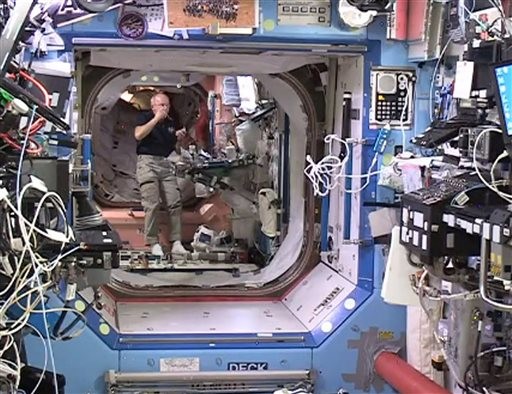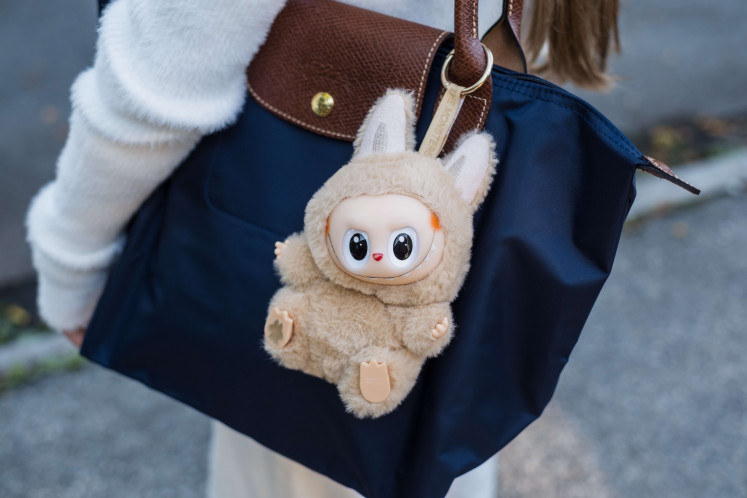Popular Reads
Top Results
Can't find what you're looking for?
View all search resultsPopular Reads
Top Results
Can't find what you're looking for?
View all search resultsAstronauts enter world's first inflatable space habitat
Change text size
Gift Premium Articles
to Anyone
 In this image from video provided by NASA, NASA astronaut Jeff Williams floats inside the Bigelow Expandable Activity Module (BEAM) Monday, June 6, 2016. The crew of the International Space Station entered the newly expanded pod Monday to collect air samples. As is customary, they wore goggles and cloth masks in case of floating debris. Williams says the room _ the Bigelow Expandable Activity Module, or BEAM _ is pristine but cold. The chamber arrived in April and was inflated a week ago. (NASA via AP/-)
In this image from video provided by NASA, NASA astronaut Jeff Williams floats inside the Bigelow Expandable Activity Module (BEAM) Monday, June 6, 2016. The crew of the International Space Station entered the newly expanded pod Monday to collect air samples. As is customary, they wore goggles and cloth masks in case of floating debris. Williams says the room _ the Bigelow Expandable Activity Module, or BEAM _ is pristine but cold. The chamber arrived in April and was inflated a week ago. (NASA via AP/-)
Space station astronauts opened the world's first inflatable space habitat Monday and floated inside.
NASA astronaut Jeffrey Williams swung open the door to the newly expanded chamber and was the first to enter. He said it was pristine but cold inside.
The room — called the Bigelow Activity Activity Module, or BEAM — arrived at the International Space Station in April, packed in the trunk of a capsule loaded with supplies. It was inflated just over a week ago.
Mission Control said the temperature registered 44 degrees, as anticipated, at one end of the 13-foot-long, 10 ½ -foot-wide chamber. There was no trace of condensation, Williams noted.
For now, BEAM is empty and dark; Williams and Russian cosmonaut Oleg Skripochka wore head lamps to illuminate the crinkled, silver walls. They collected air samples, took expansion measurements and made sure the air-pressurization tanks were empty, before exiting and closing the door behind them.
The six-man station crew will deploy more sensors and other gear over the next few days. After each brief entry, the hatch will be sealed. Mission Control anticipates just six or seven entries a year.
NASA wants to make certain the multi-layered BEAM — an experiment led by Bigelow Aerospace — can withstand wide temperature fluctuations, radiation and debris impacts over time. It will remain at the orbiting lab for two years.
The Nevada-based Bigelow is developing even bigger and better inflatable habitats for space travel. Until BEAM, the company founded by hotel entrepreneur Robert Bigelow had flown only a pair of inflatable satellites in orbit for testing.
Both Bigelow and NASA envision using pumped-up habitats for Mars expeditions. Inflatable spacecraft are lighter and more compact for launch than the traditional metal housing for astronauts, yet provide roomier living quarters once expanded.










